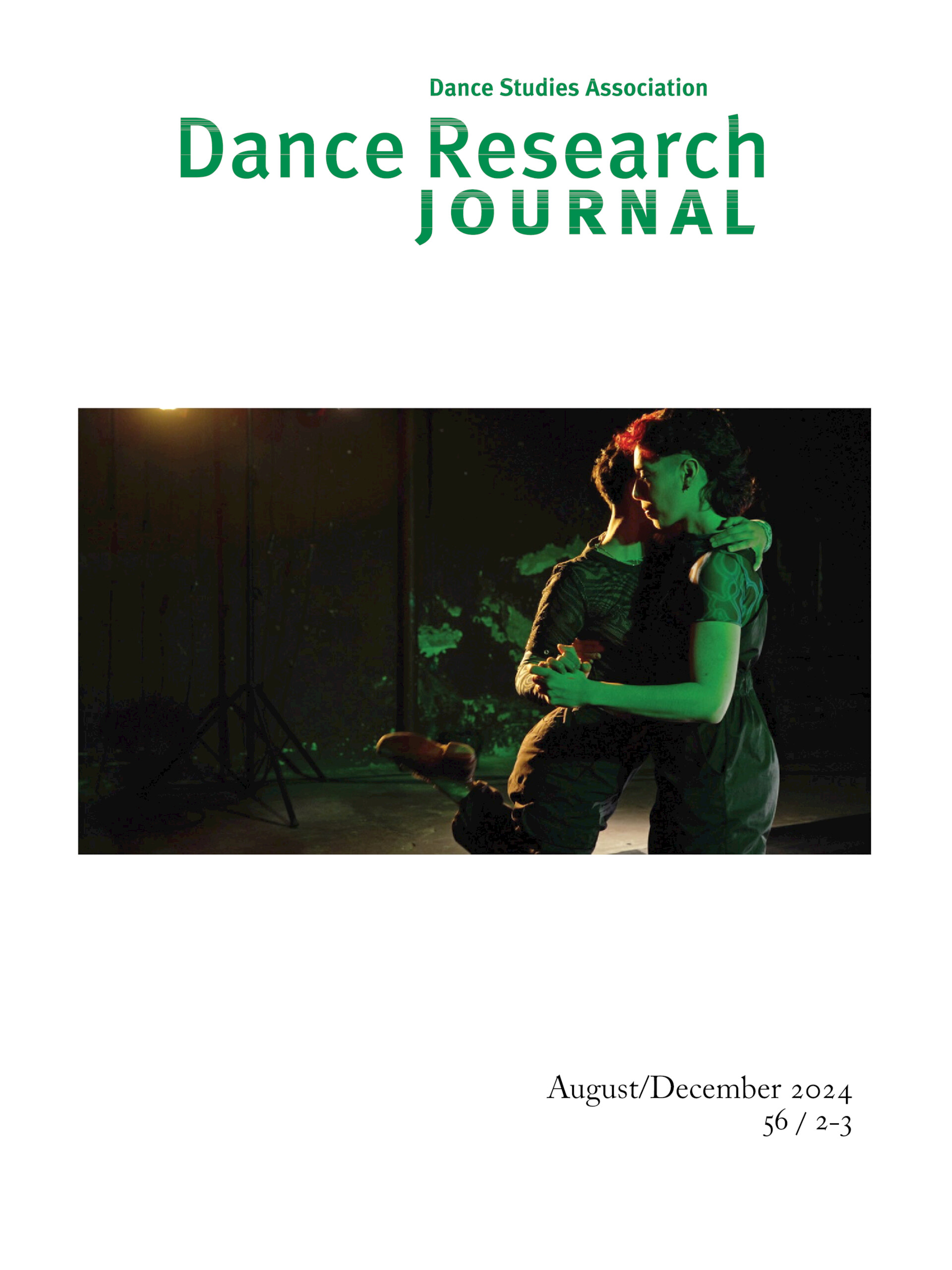Dance Research Journal
The Dance Research Journal (DRJ) is a peer-reviewed premiere publication for dance scholarship of international reach and includes articles, book reviews, and lists books received.
DRJ is published three times per year by Cambridge University Press. Published articles address dance history, theory, politics, ethnography, and intersections with cultural, gender, critical race, and diasporic studies among others. DRJ is committed to cross-disciplinary research with a dance perspective. Contributions for publication consideration are open to both members and nonmembers of DSA, and will be accepted any time.
Digital access to the Dance Research Journal is free for all members. Active members may access the journal through the member access page. Not yet a member? Access DRJ immediately when you join today!
Access DRJ through Cambridge University Press HERE. View on Project Muse (2008-). View on JSTOR (1974-2011).
SEE SPECIAL DIGITAL DRJ COLLECTION (open access through July 2024) - Cartographies of Movement
curated by DRJ Editorial Fellows Sariel Golomb, Jennifer Ligaya Senecal, and Emily Wieder
Volume 56 - Issue 2-3 - August 2024

(excerpt from Editors' Note)
We open with Naomi M. Jackson’s essay published as an “Artist Speaks” piece. Jackson’s “Self-Reflexivity of a Dance Scholar: The Place of Structured Improvisation, Care, and Debate” is born of the inspiration of necessity.
Image
Living with a serious illness prompts Jackson’s reflection on the central thematic threads of her life’s work – writing, editing, curating, and teaching – and how they simultaneously diverge and braid together. We extend gratitude to Naomi Jackson for sharing these stories of living in/with difference and publish this offering in esteemed memory of her impact on the field of dance studies and in recognition of all the lives and careers she touched.
The next two articles intervene in embodied aesthetic, cultural, and social politics through danced transgressions. Najat Alsheridah’s “Averting the Gaze: Censoring Women’s Zar Dance Performances on Kuwaiti Television,” for example, fills a critical gap in research on dance in the Arab world, in this case focusing on two resonant examples of how dancing women are represented on the Kuwaiti screen. Similarly considering the gendered politics of dance, in “Queer/Tango/Theory: Gendered Semiosis, Dancing the Binary, and Dancing on Out,” Luna Beller-Tadiar examines her “queer tanguero,” yearslong in duration, grounded in fieldwork conducted in Buenos Aires in 2018, and expanding to include “circuits of exchange between Buenos Aires and the European and North American Global North” (129). Likewise investigating the implications for dance within a discursive framework, in “Why Were New Dances in the Early 20th Century So Often Described as Plastique?” Akiko Yuzurihara and Machiko Sato consider how modernist dance in Western Europe came to be recognized by artists, critics, and aficionados as “independent of other art genres, as its own medium” (146).
Our last two articles examine the contradictions of and complications for the reception of dance performances in different contexts and their implication for how we understand what is at stake when dance criticism and popular opinion collide. Alissa Elegant’s “Cold War Legacies: American Illiteracy of the Postcolonial Aesthetics of Spectacle in Chinese Dance Dramas,” considers the aesthetic and cultural politics surrounding the performance and reception of the Chinese dance drama, Dragon Boat Racing, (Shawanwangshi 沙湾往事), by the Guang-dong Song and Dance Ensemble, in the U.S. in 2016, which a New York Times critic called a “kitschy spectacle” (161). And, in “Spectacular Suffering: Holocaust Representation in Competition Dance,” Rebecca Rossen steps into the fray of an ongoing ethical debate over “Holocaust kitsch and spectacle” with far ranging implications for dance productions within competition and commercial spaces (194). (Rebekah J. Kowal)
DRJ Submissions, Guidelines, and Other Opportunities
Open call for Managing Editor of Dance Research Journal
The Dance Studies Associate seeks a Managing Editor for Dance Research Journal. There is an expectation that the Managing Editor will commit an average of 8 hours/week to DRJ starting January 1, 2026. The initial contract will be for one year with the possibility of renewal.
Applications and inquiries should be sent to Ana Paula Höfling, Vice President of Publications and Research, Dance Studies Association, [email protected].
Deadline: October 15, 2025
DRJ Managing Editor Call
DRJ Submission Guidelines
DRJ Style and Reference Guide
DRJ Special Issue Procedures & Guidelines
DRJ Conflict of Interest Policy
Rebekah Kowal, Executive Co-Editor
Nadine George-Graves, Executive Co-Editor
Victoria Fortuna & Camelia Lenart, Book Reviews Editors
Kathryn Maruca, Managing Editor
Sariel Golomb, Editorial Fellow 2023
Cody Norling, Graduate Research Assistant 2022-2023
To see the full Editorial Board, visit the Leadership & Management page.
|

